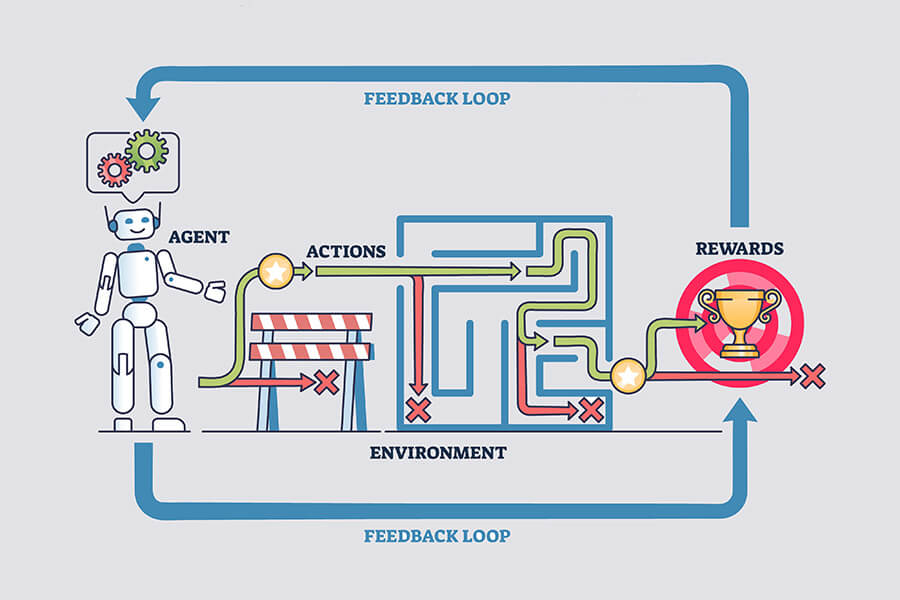Cloud governance policies play a critical role in ensuring efficient cloud management. They help organizations optimize their cloud infrastructure by setting clear guidelines for resource usage, reducing risks, and improving overall efficiency.
As more companies embrace cloud computing, the need for strong governance policies becomes increasingly evident. These policies provide a structured approach to managing cloud resources, ensuring alignment with business objectives and driving operational success.
By implementing effective cloud and data governance, organizations can enhance security, control costs, and maximize the benefits of their cloud environment.
Understanding Cloud Governance Policies and Their Impact
Cloud governance is key to managing cloud services. It ensures the cloud is secure, follows rules, and meets business goals. Good cloud governance policies help manage cloud resources well, ensuring that resources are used correctly and efficiently.
The main points of cloud governance are security, following rules, and managing costs. These points help keep the cloud safe and in line with business needs.
Cloud governance offers many benefits, such as better security, lower costs, and better rule-following. However, it has downsides, including more complexity and a high initial cost. Knowing the basics of cloud governance helps tackle these issues. It allows businesses to use cloud computing to its fullest while keeping risks low.
| Cloud Governance Principles | Benefits | Challenges |
| Security | Improved protection of cloud resources | Increased complexity |
| Compliance | Enhanced regulatory compliance | Significant upfront investment |
| Cost Management | Reduced costs | Difficulty in optimizing cloud resources |
Understanding cloud governance policies and their principles helps businesses make smart choices and maximize the benefits of cloud computing.
Essential Principles of Cloud Governance Framework
A strong cloud governance framework is key for businesses to use cloud resources effectively. The framework must follow important principles that match business goals and reduce risks. Managing cloud assets is a big part of this, helping to track and control resources for better use.
A good cloud migration plan is also vital for a smooth move to the cloud. This plan should fit with the organization’s cloud asset management. It ensures all cloud assets are set up right and safe. By sticking to cloud governance principles, businesses can make a solid plan that supports their goals and lowers cloud migration risks.
Good cloud governance means knowing how cloud assets fit into the IT picture. A strong framework allows businesses to manage, secure, and optimize their cloud assets. This boosts performance and helps meet business goals, making the company more competitive.
Strategic Implementation of Cloud Governance Policies
Effective cloud governance requires a solid plan, including clear policies and procedures. First, organizations must plan and assess their cloud setup. They look for areas for improvement and create policies that match their business goals.
Planning and Assessment Phase
In this step, they check their cloud setup for performance and security risks. This helps spot policy gaps and plan fixes. They keep their cloud safe and follow the rules by focusing on security and compliance.
Policy Development Process
Creating cloud governance policies is a team effort. IT, finance, and compliance teams all contribute. Together, they craft policies that support the business and manage the cloud well.
Following a structured cloud governance plan is key. It keeps the cloud safe, compliant, and aligned with business goals. Policies need to be checked and updated regularly to remain effective. With a good plan, cloud computing can offer benefits while keeping risks low.
Security and Compliance in Cloud Governance
Cloud governance involves keeping cloud resources safe and following rules. Companies face many restrictions, risks, and tools to check whether they follow these rules. Cloud data management helps protect data in a way that grows and changes with the company.
Using the AWS security hub helps monitor and manage cloud security and rules. It allows companies to create a strong plan for cloud safety and regulations, which includes spotting and fixing security risks and following rules.
Regulatory Requirements
Following cloud rules is crucial for companies. Rules like HIPAA, PCI-DSS, and GDPR are essential to avoid significant fines and harm to reputation. Cloud data management and safety steps, like encryption and access controls, help meet these rules.
Risk Management Strategies
Good risk management is vital for cloud safety and rules. It means finding and fixing security problems, such as data breaches and cyber-attacks. With cloud data management and the AWS security hub, companies can develop a solid plan for managing risks in the cloud.
Cost Management and Optimization Through Governance
Effective cloud management is key for organizations to get the most out of their cloud setup. Cost management and optimization are crucial. They help control expenses and use resources wisely. Governance policies ensure that cloud resources are used efficiently.
Cloud management platforms and tools are essential for managing costs and optimizing resources. They help monitor and manage cloud resources. This way, organizations can spot waste and use resources better. Using these tools can cut down on cloud costs and enhance cloud management.
Optimization is also vital in cloud governance. It helps organizations make the most of their cloud resources. By optimizing, they can boost cloud performance, lower costs, and increase efficiency. Strategies like right-sizing, reserved instances, and autoscaling can help achieve this.
Effective cost management and optimization lead to significant savings and better cloud management. These are achieved through cloud management platforms, optimization strategies, and governance policies. A proactive approach maximizes cloud value and reduces waste.
Performance Monitoring and Management Tools
Effective cloud governance requires real-time monitoring and management. Performance management helps organizations optimize their cloud resources and ensures they work at their best. Cloud-based data governance gives companies insights into their cloud setup, helping them find ways to improve.
Key performance indicators (KPIs) are crucial for managing performance. They show how well cloud resources are used. Monitoring tools, like those for IoT, track KPIs, helping companies make smart decisions about their cloud setup.
Establishing Clear KPIs
Setting clear KPIs is key to effective performance management. This means choosing the most important cloud metrics, such as resource utilization and data speed. Tracking these KPIs helps organizations better understand their cloud and make better decisions.
Advanced Monitoring Solutions
Advanced monitoring tools, like those for IoT, provide real-time insights into cloud infrastructure. They help spot issues early so companies can act quickly to keep their cloud running smoothly. Using these tools boosts a company’s ability to manage its cloud, helping it achieve its goals and succeed.
Cloud Asset Management and Resource Allocation
Effective cloud asset management is key for organizations to get the most out of their cloud infrastructure. It involves setting clear rules for how resources are used. This helps businesses use their cloud assets better and reduce waste. Moving assets to the cloud is a big part of this, making managing and using resources easier.
Resource allocation is essential in cloud asset management. It ensures that resources are used well and efficiently. With good cloud asset management, companies can use resources more effectively, save money, and improve the performance of their cloud infrastructure. Moving assets to the cloud helps with this, offering more flexibility and scalability.
Companies can ensure their cloud infrastructure meets their business goals by focusing on cloud asset management and resource allocation. This means monitoring cloud assets and adjusting resource use when necessary. This way, companies can improve their cloud infrastructure, save money, and stay competitive.
Integration of Advanced Technologies in Cloud Governance
As more companies move to cloud computing, using advanced tech like AI, big data, and IoT is key. These tools help improve cloud management by offering quick insights, making decisions automatically, and using resources better. For example, AI can spot security risks in big data, and big data analytics can help save money by optimizing cloud use.
IoT is also vital for cloud management, allowing better control over IoT devices. An IoT governance framework sets rules for managing these devices in the cloud. Companies can use these technologies to create a solid cloud and data governance plan that fits their specific needs.
| Technology | Benefits | Challenges |
| Artificial Intelligence | Enhanced security, automated decision-making | Data quality, bias, and transparency |
| Big Data Analytics | Improved resource allocation, cost optimization | Data management, scalability, and complexity |
| IoT Deployments | Enhanced device management, real-time monitoring | Security, interoperability, and data integration |
It’s crucial to weigh the risks and benefits and set up rules for managing and monitoring these tools. This way, companies can use these technologies in their cloud governance.
Best Practices for Cloud Migration Governance
Cloud migration requires a solid plan to succeed. Clear policies and procedures that match business goals are also important. Cloud governance is key to managing and monitoring cloud resources well. It helps keep security and compliance in check during migration.
Pre-migration Assessment
A detailed check is crucial before moving to the cloud. It helps spot risks and opportunities. The current setup, apps, and data help pick the best migration path. Cloud governance is vital to managing the move well.
Migration Strategy Development
Creating a solid migration plan is essential. It should outline how to move apps, data, and infrastructure. Cloud governance ensures the plan fits business goals and security needs, making the migration smooth and efficient.
Following best practices for cloud migration governance is key. It means careful planning, good cloud governance, and focusing on security and compliance. This way, businesses can fully benefit from cloud migration and reach their goals.
Conclusion: Maximizing Cloud Infrastructure Efficiency Through Effective Governance
Implementing strong cloud governance policies is key for companies wanting to get the most out of their cloud infrastructure. Clear rules and checks help businesses use their cloud resources effectively, ensuring they meet their goals.
Good cloud governance means having a security plan, following rules, saving money, and keeping things running smoothly. With the right strategy, companies can improve, secure, and reduce the cost of their cloud systems, keeping them flexible and able to grow.
When businesses focus on cloud governance, they help their IT teams perform better and ensure everyone knows what’s happening. This leads to more intelligent choices and better use of cloud infrastructure. As the cloud world keeps changing, having a solid governance plan is vital for staying competitive.








